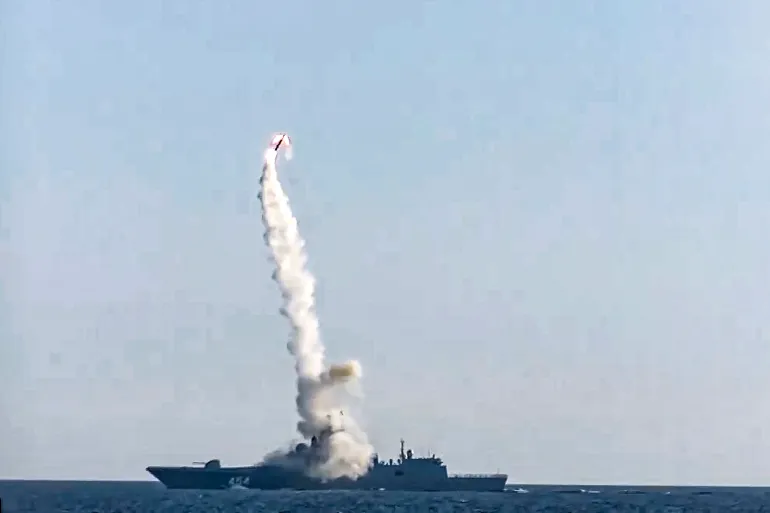The Composition and Capabilities of the Russian Strike Group
The Russian strike group currently en route to Cuba represents a formidable display of naval prowess, as described by the Russian Defense Ministry. Central to this group’s composition is a nuclear-powered submarine, armed with state-of-the-art ‘caliber‘ cruise missiles. This submarine, a key asset within Russia’s naval arsenal, boasts advanced stealth capabilities and an impressive range, making it a significant strategic threat in maritime operations.
Alongside this nuclear submarine, the strike group includes a variety of surface ships, each bringing distinct capabilities to the formation. These vessels are equipped with an array of modern weaponry, including anti-ship missiles, air defense systems, and advanced electronic warfare tools. Such equipment ensures that the strike group can operate independently in hostile environments, countering threats from both air and sea.
The ‘caliber’ cruise missiles, which are a focal point of the submarine’s armament, are known for their versatility and precision. With a range exceeding 1,500 kilometers, these missiles can strike targets with high accuracy, making them a vital component of Russia’s naval strike capabilities. The technological advancements embedded in these missiles, such as improved guidance systems and enhanced destructive power, underscore Russia’s commitment to maintaining a robust and modern naval force.
Historically, Russia has placed significant emphasis on developing its naval power, viewing it as a critical element of its broader military strategy. This deployment to Cuba is a continuation of that legacy, reflecting Russia’s ongoing efforts to project power and influence far beyond its borders. The strategic capabilities of this strike group, including its long-range firepower and defensive measures, exemplify the advanced state of Russia’s naval technology and its potential impact on global naval warfare.
In summary, the composition and capabilities of the Russian strike group heading to Cuba highlight the sophisticated nature of Russia’s modern naval assets. Through the integration of advanced submarines and surface ships, equipped with cutting-edge weaponry, Russia demonstrates its ability to conduct significant maritime operations, reinforcing its position as a dominant naval power on the world stage.
Geopolitical Implications of Russian Warships Near US Waters
The deployment of a Russian strike group, including a nuclear-powered submarine, to Cuba, situated merely 100 miles from the United States, carries significant geopolitical implications. This move harkens back to a fraught history of US-Russia relations, evoking memories of the Cuban Missile Crisis of 1962. During that period, the United States and the Soviet Union stood on the brink of nuclear war, underscoring the severe tensions that naval proximities can provoke between these two superpowers.
In the current geopolitical climate, Russia’s decision to position its warships so close to US territory can be perceived as both a demonstration of military strength and a strategic provocation. This action appears to be a calculated move in response to the growing presence of NATO forces in Eastern Europe and ongoing tensions over Ukraine. It signals Moscow’s intent to assert its influence and challenge US hegemony in the Western Hemisphere.
The United States and its allies are likely to interpret this maneuver as a direct threat to regional stability. Potential responses could range from diplomatic protests and economic sanctions to increased military readiness in the region. Washington may also seek to galvanize its alliances, reinforcing commitments with NATO and other partners to counterbalance Russia’s assertive posture.
The broader international community will be closely monitoring the situation. Countries with vested interests in maintaining global security, such as China and members of the European Union, may weigh in on the matter, influencing diplomatic discourse and potential resolutions. The presence of Russian warships near US waters introduces a new vector of uncertainty into international relations, with the potential to escalate existing conflicts or spark new ones.
The long-term consequences of such military maneuvers could be far-reaching. They may lead to a renewed arms race, as both the United States and Russia seek to fortify their naval capabilities. Additionally, this development could exacerbate existing geopolitical divides, making diplomatic resolutions more complex. Ultimately, the deployment of Russian warships near Cuba serves as a stark reminder of the fragile balance of power in global politics and the enduring legacy of Cold War-era tensions.
































